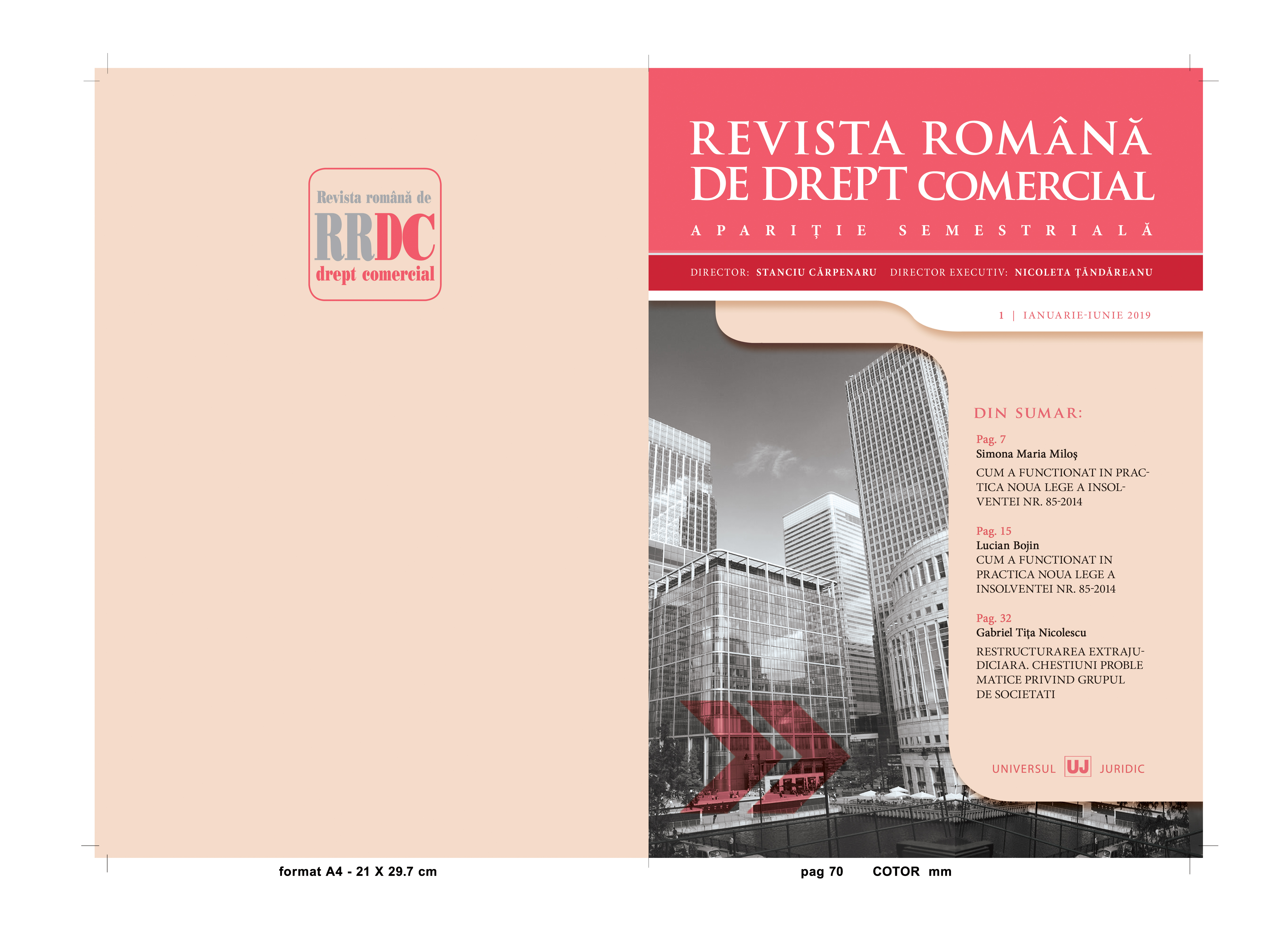Executarea silită individuală – protecţie a creditorului curent în cadrul procedurii insolvenţei sau executare paralelă?
Individual forced execution – protection of the current creditor in the insolvency proceedings or parallel execution?
Author(s): Nicoleta ŢăndăreanuSubject(s): Law, Constitution, Jurisprudence, Civil Law
Published by: Universul Juridic
Keywords: individual forced execution; forced execution specific to insolvency; current creditor; jurisdiction;
Summary/Abstract: The present study aims to address some issues related to the interpretation of the provisions of art. 143 para. (1) and (3) of Law No. 85/2014, as amended by the Emergency Ordinance of the Government No. 88/2018. More specifically, it is the interpretation of the final thesis in paragraph 1 that „for debts accumulated in the period of insolvency proceedings which are more than 60 days old, enforcement could be started”. The arguments tend to demonstrate that the current creditor's right to commence enforcement applies only to judicial reorganisation procedures governed by the provisions of the Law No. 85/2014, started [by reference to the date of introduction of the application for initiation of the procedure] after the entering into enforce of the Ordinance, excluding the procedures covered by the same normative act started before 2 October 2018 and the procedures Governed by the provisions of the Law No. 85/2006. We also want to argue that the „forced execution” provided for in the text should be qualified as a forced execution specific to the insolvency field and should be regarded as a means of protecting the current creditor, through which he is able to realize his claim during the reorganization period, and not as a parallel forced execution, the decisive argument being the incompatibility between the provisions of the code of civil procedure governing the forced execution and the principles of insolvency. Accordingly, we intend to argue that the entity that carried out this execution is the entity that applies the reorganization procedure, the judicial administrator, and that any control of legality of the measures taken in the context of this forced execution is performed by the syndic judge.Last but not least, we want to address the issue of the object of the enforcement undertaken by the current creditor, the pursuit of which is limited to the goods provided for in art. 140 para. (3) of Law No. 85/2014 – amounts arising from the debtor's current activity or the recovery of unencumbered assets of preference cases.
Journal: Revista română de drept comercial
- Issue Year: 2020
- Issue No: 01
- Page Range: 61-81
- Page Count: 21
- Language: Romanian
- Content File-PDF

